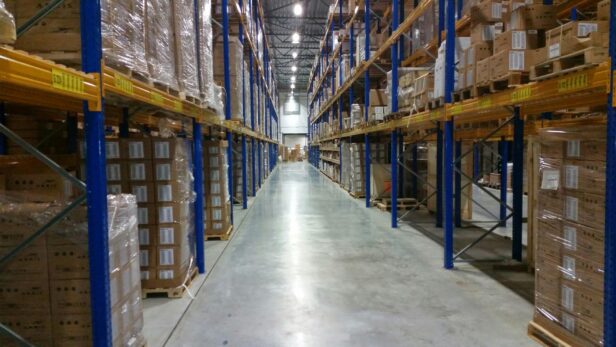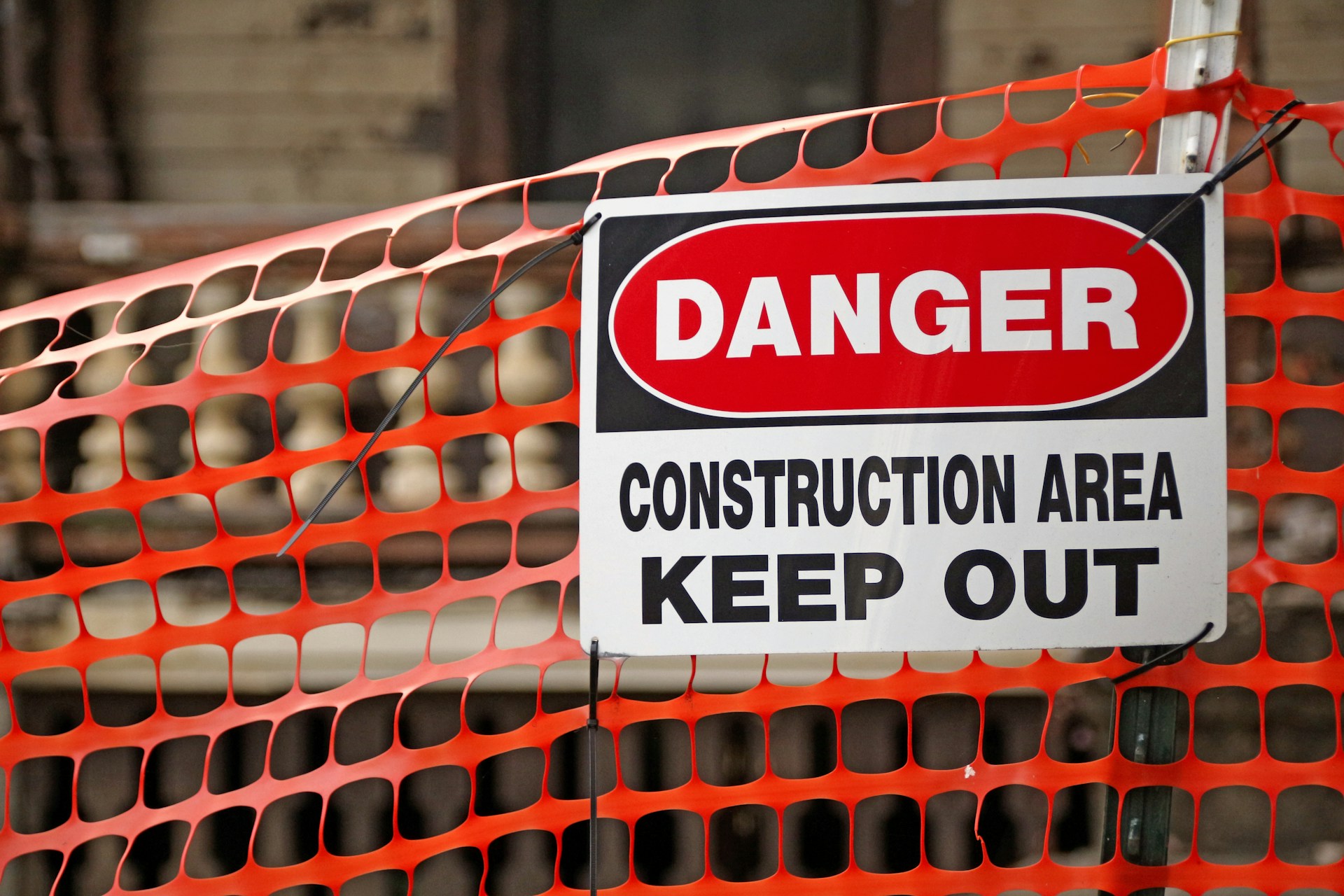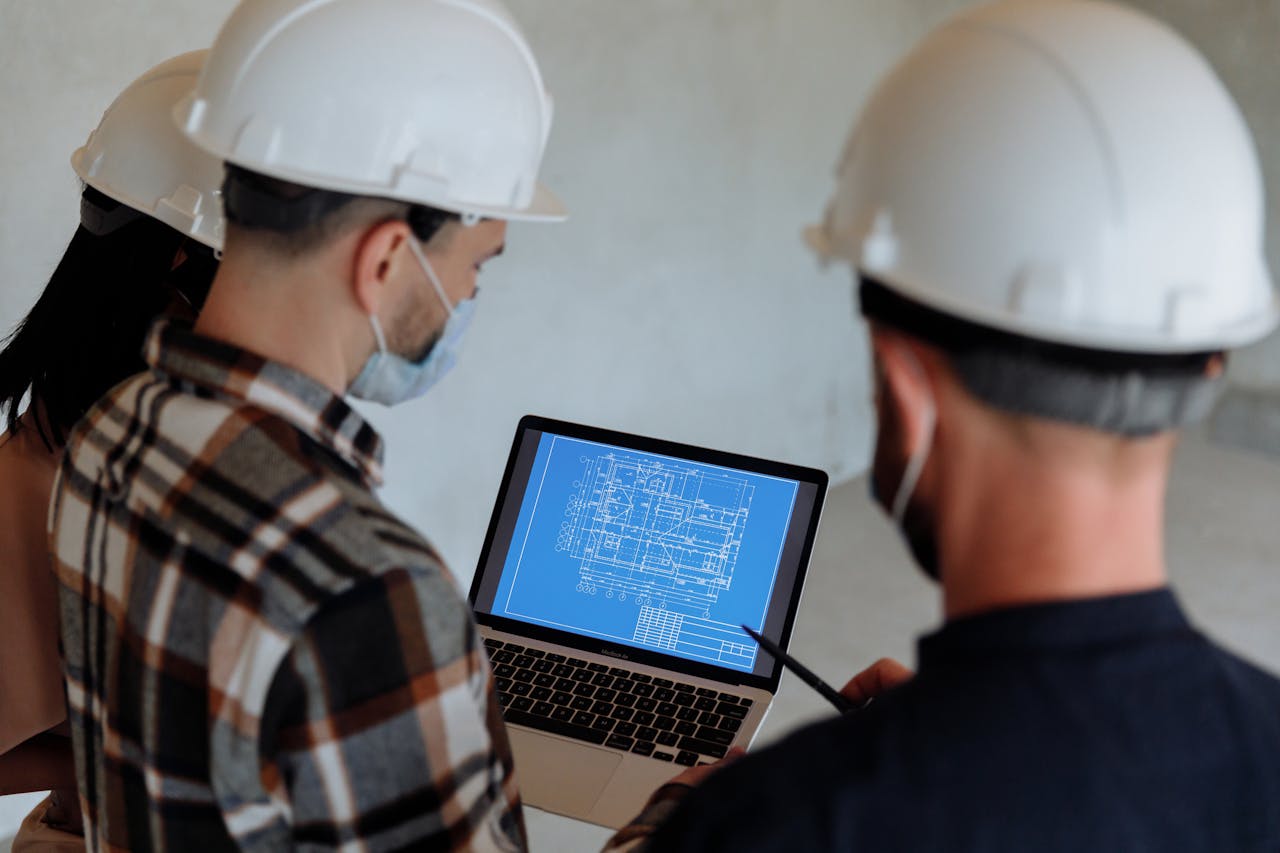In today’s fast-paced industrial landscape, warehouses form the critical backbone of supply chain management and logistics. Yet amidst the focus on optimizing space and streamlining operations, two crucial elements often fade into the background: lighting and ventilation. At EB3 Construction, we recognize that these foundational aspects of warehouse infrastructure directly impact not just operational efficiency, but the very health and safety of the workforce.
Proper illumination in a warehouse goes far beyond simply keeping the lights on. We approach lighting as a multifaceted tool that enhances visibility, reduces errors, and fundamentally improves worker safety. By strategically designing and implementing advanced lighting solutions, we enable staff to navigate spaces more confidently, handle materials with greater precision, and maintain heightened awareness of their surroundings. This translates to fewer accidents, increased productivity, and a workforce that feels valued and protected.
Ventilation, while less visible, plays an equally vital role in creating an optimal warehouse environment. Our ventilation systems are engineered to maintain superior air quality, regulate temperature fluctuations, and control humidity levels. These factors combine to safeguard both personnel and products. Effective airflow mitigates the buildup of potentially harmful pollutants, while temperature and humidity management protect sensitive inventory and equipment. By addressing these often-overlooked aspects, we help our clients meet stringent regulatory requirements while fostering a workspace that promotes health, comfort, and peak performance.
What Are the Challenges of Poor Lighting and Ventilation in Warehouses?
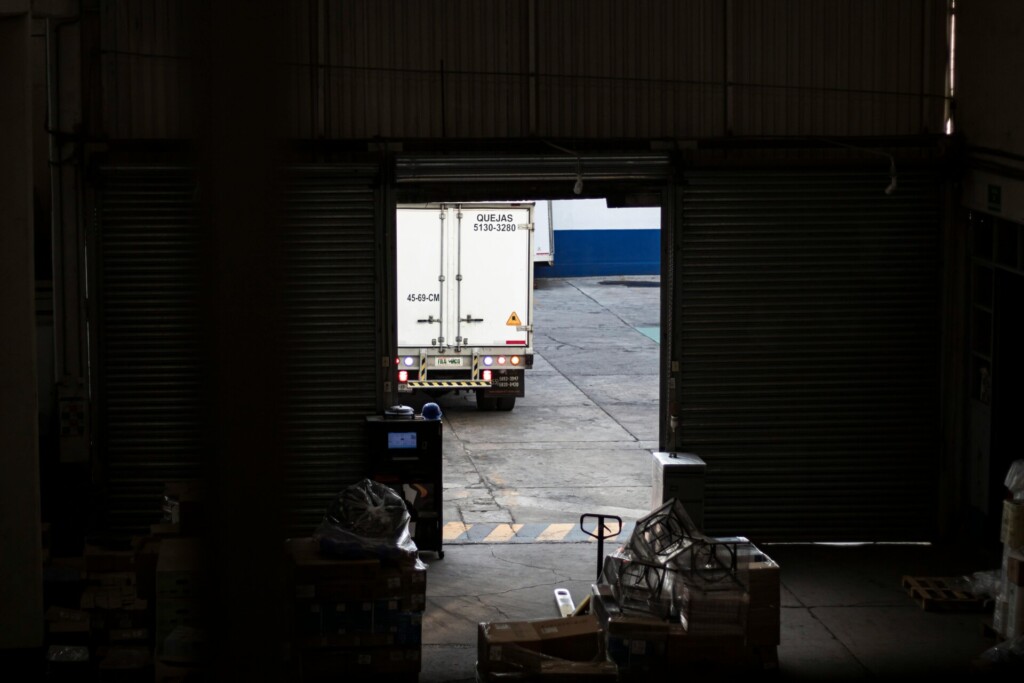
Poor lighting and ventilation in warehouses create numerous operational challenges that impact worker safety, productivity, and overall business performance. Let’s examine some of the key issues we commonly encounter when assessing warehouse environments:
Lighting Challenges
Inadequate illumination in warehouses leads to several problems:
Accident risks increase significantly as workers struggle to see potential hazards or obstacles in their path. We’ve observed cases where poor lighting contributed to forklift collisions and workers tripping over misplaced items.
Order picking accuracy declines, resulting in shipping errors and customer dissatisfaction. In one facility we evaluated, error rates were 15% higher in dimly lit storage areas compared to well-illuminated zones.
Worker fatigue sets in more quickly as employees strain their eyes to read labels or locate items. This eye strain often leads to headaches and decreased concentration as shifts progress.
Ventilation Issues
Insufficient airflow and climate control in warehouses create uncomfortable and potentially hazardous conditions:
Stagnant air allows pollutants from machinery exhaust, dust, and chemical fumes to accumulate. We’ve measured unsafe levels of carbon monoxide in poorly ventilated loading dock areas where forklifts operate frequently.
Temperature hotspots form in areas with inadequate air circulation, leading to worker discomfort and reduced productivity. Some facilities we’ve assessed had temperature variances of over 20°F between different zones.
Product integrity can be compromised in areas prone to moisture buildup or extreme temperature fluctuations. We’ve seen instances of mold growth on stored goods in humid, poorly ventilated sections of warehouses.
Regulatory and Business Impacts
Beyond the immediate operational challenges, substandard lighting and ventilation can have broader consequences:
Non-compliance with OSHA workplace safety standards puts businesses at risk of fines and penalties. Regular inspections are crucial to identify and address potential violations.
Employee retention suffers as workers seek more comfortable environments. High turnover rates drive up training costs and reduce overall operational efficiency.
Energy costs increase as facilities rely more heavily on artificial lighting and climate control to compensate for poor natural light and airflow.
By addressing these lighting and ventilation challenges, warehouse operators can create safer, more productive environments that support long-term business success. Proper assessment and strategic improvements are key to overcoming these common issues.
How Can Warehouses Implement Effective Lighting Solutions?
Energy-efficient LED lighting is revolutionizing warehouse environments, offering significant benefits over traditional lighting systems. By consuming up to 75% less energy while providing superior brightness, LEDs are helping warehouses reduce operational costs and improve visibility. The long lifespan of LED lights – often exceeding 50,000 hours – translates to reduced maintenance needs and associated expenses.
Different areas within a warehouse require specialized lighting solutions to optimize safety, productivity and energy efficiency:
High Bay Lights
For warehouses with high ceilings, high bay LED lights are the go-to solution. These powerful fixtures provide intense, uniform illumination across large areas, making them ideal for general overhead lighting. High bay lights typically range from 15,000 to 60,000 lumens, allowing facilities to tailor light levels to their specific needs.
LED Tube Lights
As direct replacements for fluorescent tubes, LED tube lights offer an easy retrofit option. They provide flicker-free illumination that reduces eye strain and can be installed in existing fixtures, minimizing disruption during upgrades.
Panel Lights
For office spaces within warehouses, LED panel lights deliver even, glare-free illumination. Their slim profile and modern aesthetic make them suitable for drop ceilings or surface-mounting applications.
Strip Lights
LED strip lights are versatile solutions for illuminating aisles, shelving units, and other linear spaces. Their modular design allows for customized installations to meet specific layout requirements.
Troffer Lights
For areas with drop ceilings, LED troffer lights provide efficient general lighting. Available in various sizes, they integrate seamlessly into existing ceiling grids while delivering improved light quality over fluorescent alternatives.
To further optimize energy usage and meet specific operational needs, warehouses can implement smart lighting controls:
- Motion sensors automatically dim or turn off lights in unoccupied areas
- Daylight harvesting systems adjust artificial lighting based on available natural light
- Programmable timers ensure lights are only on when needed
- Wireless controls allow for flexible zoning and easy adjustments
When implementing lighting solutions, it’s crucial to adhere to OSHA standards for workplace safety. OSHA recommends minimum illumination levels of 5 foot-candles in general work areas and 10 foot-candles in aisles and passageways. However, task-specific areas may require higher light levels to ensure worker safety and productivity.
By strategically combining these lighting technologies and controls, warehouses can create environments that are safer, more productive, and significantly more energy-efficient. The initial investment in LED lighting and smart controls often pays for itself through reduced energy and maintenance costs, making it a sound business decision for forward-thinking warehouse operators.
As the logistics industry continues to evolve, staying current with lighting technology can give warehouses a competitive edge. Whether upgrading an existing facility or designing a new one, carefully considering lighting solutions can lead to substantial improvements in operations, safety, and the bottom line.
What Are the Best Practices for Improving Warehouse Ventilation?
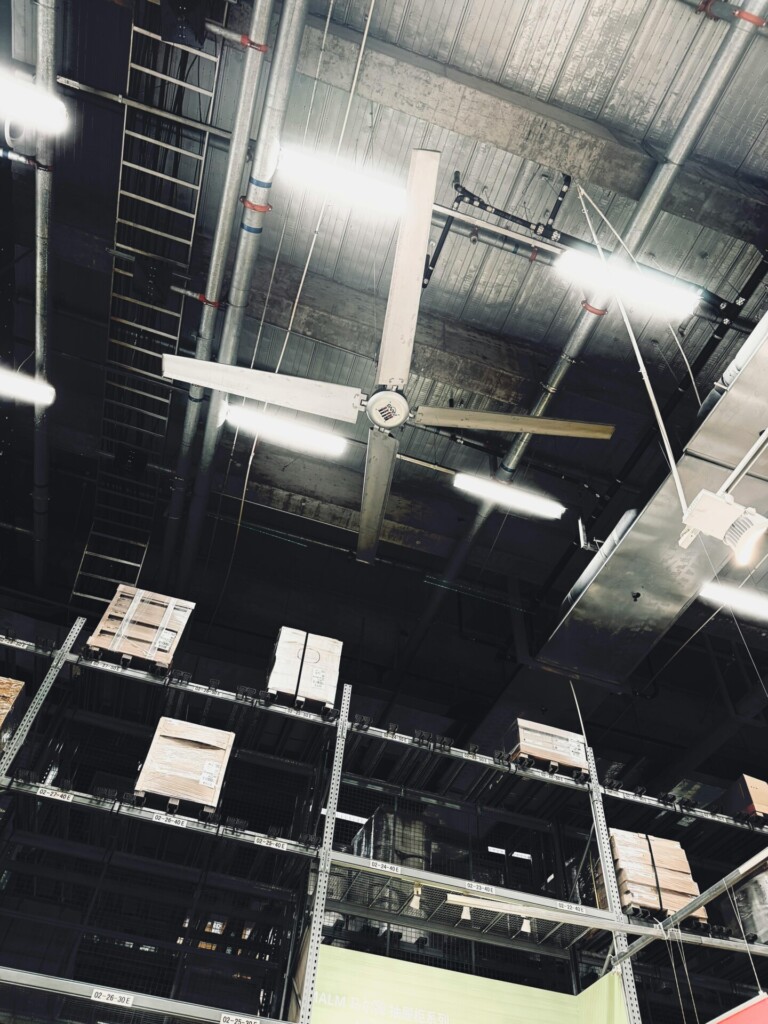
Effective warehouse ventilation begins with a thorough assessment of specific facility needs. We analyze factors like building size, layout, and the types of goods stored to develop a tailored ventilation strategy. By understanding the unique requirements of each warehouse, we can implement solutions that optimize airflow and air quality.
A key best practice is incorporating natural ventilation elements wherever possible. We strategically place vents, skylights, and windows to take advantage of outdoor air currents and reduce reliance on mechanical systems. This passive approach not only improves air quality but also contributes to energy efficiency.
For larger warehouse spaces, we often recommend installing High-Volume, Low-Speed (HVLS) fans. These powerful yet energy-efficient units excel at moving substantial volumes of air at low rotational speeds. HVLS fans help maintain consistent temperatures throughout the facility, preventing hot spots and stagnant air pockets that can impact worker comfort and product integrity.
Implementing zoned ventilation systems is another effective strategy we employ. This approach allows for targeted air quality management in different areas of the warehouse. For example, we might design more robust ventilation for sections with higher worker occupancy or areas storing goods that require specific environmental controls.
Regular maintenance is crucial for any ventilation system to perform optimally. We develop comprehensive maintenance schedules that include routine duct cleaning and filter replacement. These practices ensure that airflow remains unobstructed and that the air quality stays at desired levels.
Leveraging smart technology in ventilation systems is an emerging best practice we’re increasingly integrating into our designs. These advanced systems can automatically adjust airflow based on real-time conditions, optimizing performance and energy usage throughout the day.
By combining these best practices, we create ventilation solutions that not only meet current needs but also adapt to future changes in warehouse operations. Our goal is to deliver systems that provide consistent air quality, enhance worker comfort, and contribute to overall facility efficiency.
How Do Lighting and Ventilation Improvements Benefit Employee Well-being?
Thoughtful lighting and ventilation design significantly impact employee health and productivity in the workplace. As a general contractor, we understand how these environmental factors can transform a space and enhance occupant comfort. Let’s explore the key benefits of optimizing lighting and ventilation:
Enhanced Safety Through Proper Illumination
We take workplace safety seriously, which is why we prioritize proper illumination in all areas. By installing bright, uniform lighting in high-traffic zones like aisles, loading docks, and storage areas, we dramatically reduce the risk of accidents and injuries. Good visibility allows employees to safely navigate the space and identify potential hazards.
Reduced Eye Strain and Visual Fatigue
When designing lighting systems, we carefully select fixtures that provide flicker-free, glare-free illumination. This prevents the eye strain, headaches, and visual fatigue often caused by poor quality lighting. By mimicking natural daylight where possible, we create a more comfortable visual environment that supports long-term eye health.
Improved Indoor Air Quality
Proper ventilation is crucial for maintaining healthy indoor air. Our ventilation systems are engineered to provide a continuous supply of fresh, filtered air while removing stale air and airborne pollutants. This reduces employees’ exposure to potentially harmful particles, allergens, and pathogens that can lead to respiratory issues and illness.
Increased Alertness and Productivity
The right lighting and ventilation create an environment that promotes alertness and focus. Bright, cool-toned lighting helps regulate circadian rhythms and boosts energy levels during work hours. Meanwhile, a steady supply of oxygen-rich air improves cognitive function and helps employees stay sharp throughout the day.
Enhanced Comfort and Morale
By optimizing temperature, humidity, and air movement, well-designed ventilation systems dramatically improve overall comfort. This, combined with thoughtful lighting that reduces glare and creates visual interest, leads to more satisfied employees. When workers feel physically comfortable in their environment, it naturally boosts morale and job satisfaction.
At EB3 Construction, we leverage our expertise to create workplaces that truly support employee well-being. By focusing on these crucial environmental factors, we help our clients foster healthier, more productive workforces while potentially reducing absenteeism and turnover. The result is a win-win for both employers and employees.
Conclusion: The Strategic Value of Warehouse Environment Optimization
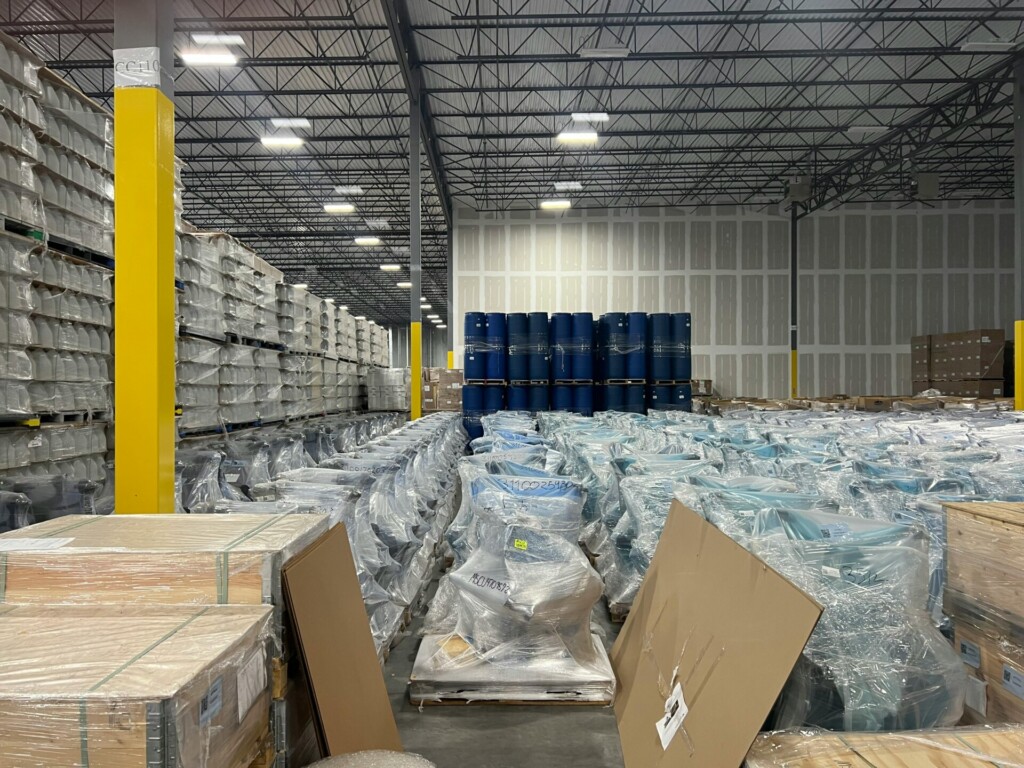
Optimizing warehouse lighting and ventilation is not just about meeting regulatory requirements—it’s a strategic investment that can transform operations and drive business growth. By creating safer, more comfortable work environments, these improvements yield significant returns across multiple areas:
Enhanced worker safety and productivity: Better lighting and air quality reduce accidents and fatigue, allowing employees to work more efficiently throughout their shifts. This leads to higher output and fewer costly errors or injuries.
Improved inventory protection: Proper lighting and ventilation help maintain optimal storage conditions, extending product shelf life and reducing spoilage or damage. This protects your inventory investment and ensures quality for customers.
Substantial energy savings: Energy-efficient LED lighting, smart controls, and natural ventilation solutions dramatically cut electricity costs. The initial investment often pays for itself quickly through lower utility bills.
Regulatory compliance: Staying ahead of lighting and air quality standards helps avoid fines and disruptions from inspections. It also demonstrates a commitment to worker wellbeing.
By implementing a comprehensive optimization strategy—including high-efficiency LED fixtures, daylight harvesting, HVLS fans, and strategic natural ventilation—warehouses can create sustainable environments that boost productivity while reducing overhead. Regular maintenance and data-driven refinements ensure these systems continue delivering value for years to come.
The time to act is now. We encourage you to assess your current warehouse conditions and identify opportunities for improvement. Even small changes can yield significant results. By investing in your facility environment today, you’re investing in your company’s efficiency, sustainability, and success for the future.
To explore how EB3 Construction can help optimize your warehouse environment for peak performance, contact our team for a consultation.

